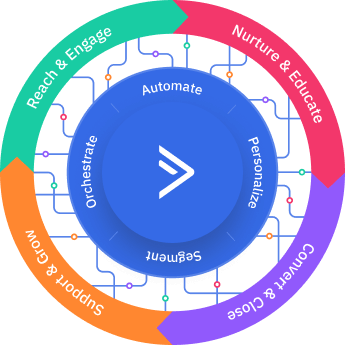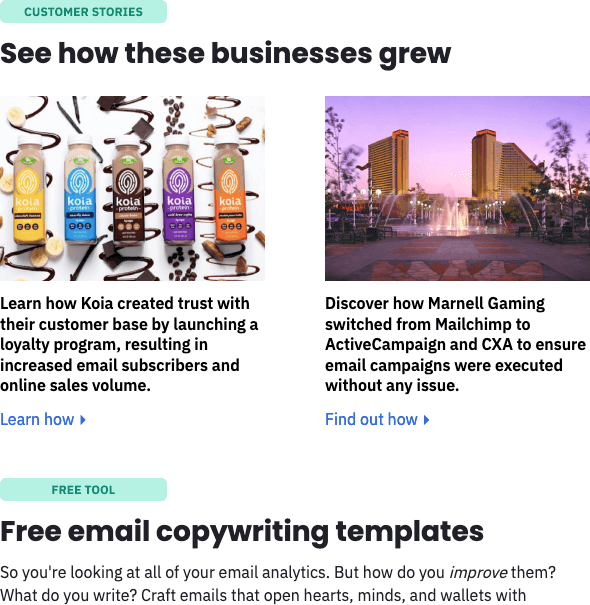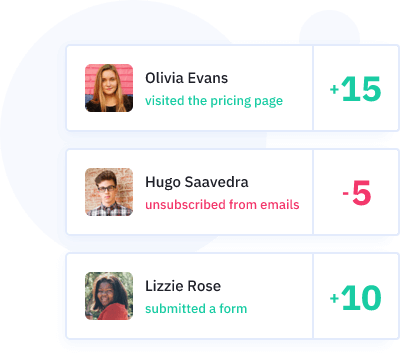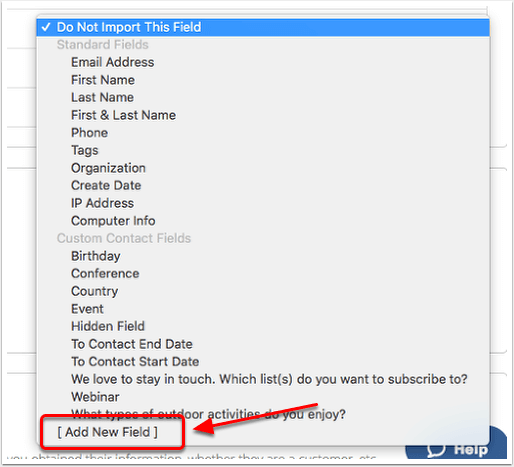Since 2003, our goal of helping any business reach their customers has not changed; what’s changed is that email isn’t the only way to drive growth. We’ve introduced new channels, features, and ways of thinking about customer experience that help companies of all sizes scale, ActiveCampaign included.
Today, ActiveCampaign is one of the largest users of the ActiveCampaign platform. Over 900 of our employees around the world use the same platform for different use cases every single day. Marketing drives awareness and nurtures leads across multiple channels and touchpoints, Sales prioritizes conversations so time and resources are well spent, and the Success and Support teams are there every step of the way to ensure our users are growing effectively.
Where to start?
For B2B companies, there are so many ways to drive awareness and generate leads. At ActiveCampaign we utilize several channels to engage with new audiences and nurture leads along the way. Whether they are ready to convert on the spot or are simply shopping around, we want to send them the right message at the right time so we don’t waste anyone’s time.
- Email marketing. We send coordinated, well timed email sequences to those who opt in at different stages of their journey or on different channels. From there, we nurture these leads with content that’s indicative of their intentions and behaviors as they move and progress through the process.
- Content marketing. As the leader in customer experience automation (CXA), it’s important that we deliver content at the right time and in the right place. We share thoughtful blogs (like this one), produce helpful webinars, and regularly post on social media, driving awareness wherever possible.
- Direct outreach. We love our sales team, they help generate and nurture leads by sending regular emails, having conversations over the phone, and ultimately helping leads move through the funnel.
- Let them try it out. These days, it’s crucial to consider your purchases. That goes for CXA providers too. We put leads in the driver’s seat by providing a completely free trial so they can experience the magic of CXA for themselves.

Whatever your specific lead generation strategy is, your customer should be the center and the sole focus. What sort of experience are they having? Do they clearly understand the value of your business? Are you sending them the right content/message for where they are in the buying process, or are you sending blanketed content hoping to grab their attention?
Tailor content and automatically qualify leads based on email engagement
Let’s dive a bit more into how we use a special blend of email and marketing automation to spread awareness and generate meaningful leads!
When a customer comes to our website, there are many ways we can capture their information to qualify them as a lead. Whether they fill out the “Request a Demo” form, sign up for our regular newsletters, or start a trial, we take that into consideration when automating their journey. The type of form they submit or the action they take determines what automation workflow they are added to, and each will have its own cadence and format of outreach.

Send different content to different segments from the same email
Using conditional content, you can build a single email but add blocks of images, content, or CTAs that differ depending on certain segments of your audience.

In emails we send from the main ActiveCampaign account, the content for leads differs from what we send to converted customers, tailoring content based on where they are in their customer journey.

Email content for existing customers

Email content for prospective customers
For example, in our newsletter we share relevant blog posts for customers who have already converted, whereas we share customer stories for leads to demonstrate the success that can happen should they leverage CXA. Promotions are another way we differentiate content. We show customer leads one that works for new customers only, and show existing customers one that works if they upgrade. (If you’re interested in learning about current promotions, reach out to our team!)

Score leads based on their interactions with your business across channels
Once leads are routed to a specific path, we track their engagement and give them a rating based on how worthy of a lead they are. Do they open and engage with an email? Great, rate them higher than those who delete or never open the message. You should be thinking of the different levels of engagement you get from your leads, so you’re spending time and energy on those that are most likely to take action, convert, or purchase. Our own marketing and sales teams use lead scoring so they can use their time efficiently. At first, you want to automate these steps to find out how engaged and worthwhile they are, then you can step in with human interaction (a sales call or personal email) when you know your time will be well spent.

Every time a user does an activity, we track that in custom fields and tags to accurately track them across their email sequence. Sometimes, users have questions about whether to use a custom field versus a tag. You should be using custom fields for data that is not likely to change often like birthdate, address, or phone number.

Tags are best to use with information that can change, or is easy to filter. For example, you’d use a tag to indicate someone is an Instagram user, but you’d want to use a custom field to store their Instagram handle. That way you can create a segment of Instagram users and you could use the custom field to insert their handle into campaigns.
Once you have a good lead generation strategy and are tracking engagement, it’s time to look deeper at performance. We don’t just create an email nurture flow and forget about it.

We continually iterate and update email content, steps within automations, and calls to action/goals so that our leads are always having the best experience, and our teams are getting the most worthwhile leads possible. We work cross functionally with other teams inside ActiveCampaign to augment data and analyze any trends across the lead’s journey.
Give lead scoring, conditional content, and custom fields a try for yourself, and you’ll see how they can make all the difference in meaningful engagement and save you time and energy. Stay tuned for more use case examples as we outline how we use our own platform across the entire customer lifecycle.
